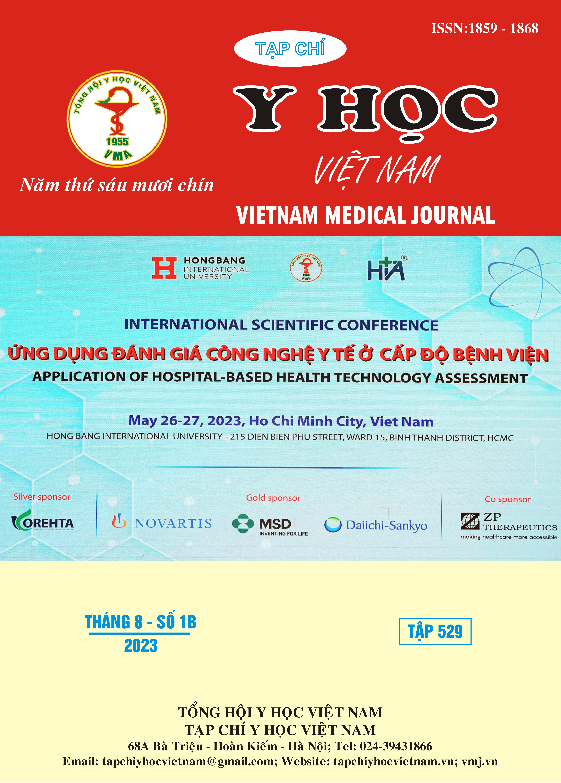CLINICAL AND SUBCLINICAL CHARACTERISTICS IN PATIENTS WITH RADICAL MASTOIDECTOMY WITH DRAINAGE
Main Article Content
Abstract
Objectives: Describe clinical and subclinical characteristics in patients with radical mastoidectomy with drainage. Objects and Methods: The study design describes a intervention case by case in which 32 patients, after radical mastoidectomy, still had drainage, were treated with revision tympanomastoidectomy. Results: The most common functional symptoms were purulent ear discharge with 32/32 cases (100%) and hearing loss with 30/32 cases (93,8%). There are 5 common problems causing instability of the mastoid cavity: stenosis of external auditory meatus in 2/32 cases (6,3%); high facial wall has 21/32 cases (65,6%); Skin cover the surgical cavity is thin with 12/32 cases (37,5%). Perforated tympanic membrane had 17/32 cases (53,1%) with 7/32 cases of total perforation (21,9%), rate of recurent cholesteatoma had 8/32 cases (25%). 29/29 cases (100%) had ossicular disruption, in which: 29/29 cases (100%) lost the entire incus, 26/29 cases (89,7%) lost the entire malleus, only 65,5% had stapedial footplate fixation 4/29 cases (13,8%). Hearing loss: 18/30 cases (60%) of hearing is moderate and severe. The mean PTA was 66,4±21,2; The mean ABG was 38.5±11.6. Conclusion: The functional and physical symptoms of patients after radical mastoidectomy are still relatively complicated. There are some problems as high facial wall, residual or recurrent lesions, the large mastoid cavity not suitable with small external auditory meatus so cannot clean ear at offices and the patient's hearing is greatly reduced, which can be preoperative assessment criteria and have prognostic value for revision tympanomastoidectomy.
Article Details
Keywords
Clinical and subclinical characteristics, the radical mastoidectomy cavity still otorrhea.
References
2. M. I. Kos (2004), "Anatomic and functional long-term results of canal wall-down mastoidectomy", Ann Otol Rhinol Laryngol. 113(11), 872-6.
3. V. Singh M. Atlas (2007), "Obliteration of the persistently discharging mastoid cavity using the middle temporal artery flap", Otolaryngol Head Neck Surg. 137(3), 433-8.
4. Nguyễn Hoàng Huy (2018), Đánh giá kết quả chỉnh hình màng nhĩ xương con, đồng thời với phẫu thuật khoét chũm tiệt căn. Luận án Tiến sĩ Y học, Trường Đại học Y Hà Nội.
5. Nguyễn Thị Tố Uyên (2018), Đánh giá kết quả phẫu thuật nội soi tiệt căn xương chũm đường trong ống tai ở bệnh nhân viêm tai giữa mạn tính nguy hiểm. Luận án Tiến sĩ Y học, Trường Đại học Y Hà Nội.
6. Trần Thịnh và cộng sự (2019), Đánh giá kết quả phẫu thuật khoét rỗng đá chũm tường thấp có chỉnh hình tai giữa trong điều trị viêm tai giữa mạn có cholesteatoma. Tạp chí Y học Tp.Hồ Chí Minh, Phụ bản tập 23, số 3, 2019.
7. Phạm Thanh Thế (2017), Nghiên cứu chỉnh hình tai giữa trên hố mổ khoét chũm tiệt căn. Luận án Tiến sĩ Y học, Trường Đại học Y Hà Nội.
8. Lê Hoàng Phong và cộng sự (2013), Tiêu chuẩn đánh giá trước phẫu thuật trong tái tạo hố mổ. Tạp chí Y học Tp.Hồ Chí Minh, tập 17, phụ bản của số 1, 2013.


